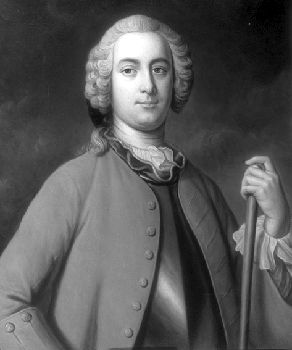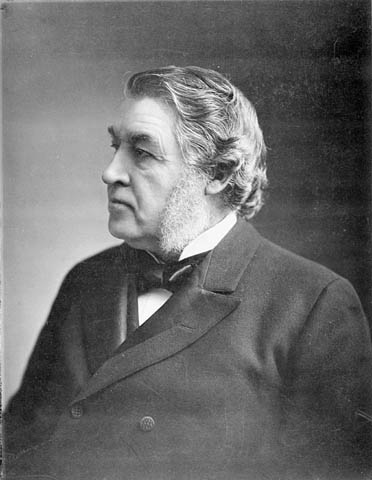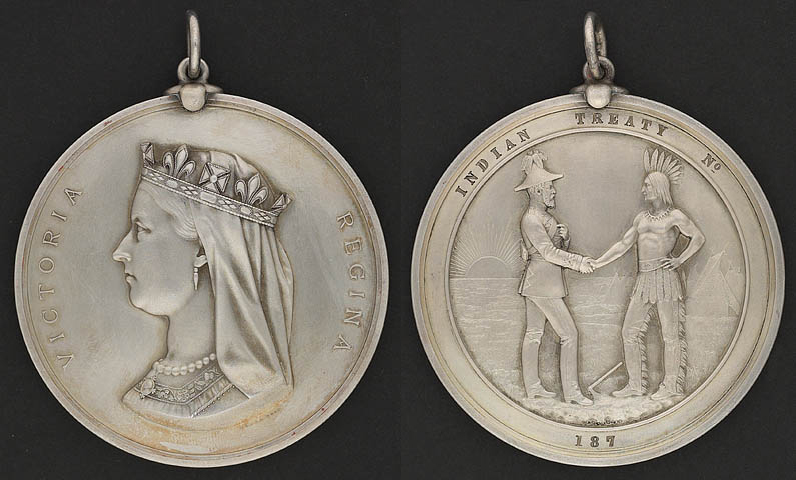Article
Nova Scotia 1714-84
Confirmed as British by the Treaty of Utrecht in 1713, the peninsula of Nova Scotia was neglected until 1749 - a period of "phantom rule" and "counterfeit suzerainty.

Enter your search term
Signing up enhances your TCE experience with the ability to save items to your personal reading list, and access the interactive map.
Create AccountArticle
Confirmed as British by the Treaty of Utrecht in 1713, the peninsula of Nova Scotia was neglected until 1749 - a period of "phantom rule" and "counterfeit suzerainty.
"https://d3d0lqu00lnqvz.cloudfront.net/media/media/12f25a44-2508-4e64-9dd1-8eb4b212345d.jpg" // resources/views/front/categories/view.blade.phphttps://d3d0lqu00lnqvz.cloudfront.net/media/media/12f25a44-2508-4e64-9dd1-8eb4b212345d.jpg

Article
In 2012, the Nova Scotia Agricultural College merged with Dalhousie University, becoming the University’s Faculty of Agriculture.
"https://www.thecanadianencyclopedia.ca/images/tce_placeholder.jpg?v=e9dca980c9bdb3aa11e832e7ea94f5d9" // resources/views/front/categories/view.blade.phphttps://www.thecanadianencyclopedia.ca/images/tce_placeholder.jpg?v=e9dca980c9bdb3aa11e832e7ea94f5d9

Article
Nova Scotia was one of the four founding provinces of Canada. It joined New Brunswick, Ontario and Quebec in Confederation on 1 July 1867. However, this was mainly because Confederation delivered the Intercolonial Railway to the Maritimes, and because of the efforts of Sir Charles Tupper. His government passed approval for Confederation in the colonial legislature despite popular opposition. (See Confederation’s Opponents.) Confederation was met with mass protests in the colony. Joseph Howe led a two-year effort to repeal the union. (See Repeal Movement.) But Howe finally decided he could do more to help his province by working inside the federal government. He joined the federal Cabinet in 1869.
"https://d3d0lqu00lnqvz.cloudfront.net/media/media/7b457631-bb6e-40ee-bf61-fab12a06fb6d.jpg" // resources/views/front/categories/view.blade.phphttps://d3d0lqu00lnqvz.cloudfront.net/media/media/7b457631-bb6e-40ee-bf61-fab12a06fb6d.jpg

Article
The first degree-granting art school in Canada, through the 1970s it was on the cutting edge of the international art world; for the 21st century, the school has adapted to the more complex and diverse needs of artists and designers in the digital age.
"https://d3d0lqu00lnqvz.cloudfront.net/media/media/ad75e706-01dd-441e-92d5-7b3212b981ab.jpg" // resources/views/front/categories/view.blade.phphttps://d3d0lqu00lnqvz.cloudfront.net/media/media/ad75e706-01dd-441e-92d5-7b3212b981ab.jpg

Macleans
For days, Nova Scotia Tory Leader John Hamm withstood the pressure.This article was originally published in Maclean's Magazine on July 1, 1999
"https://www.thecanadianencyclopedia.ca/images/tce_placeholder.jpg?v=e9dca980c9bdb3aa11e832e7ea94f5d9" // resources/views/front/categories/view.blade.phphttps://www.thecanadianencyclopedia.ca/images/tce_placeholder.jpg?v=e9dca980c9bdb3aa11e832e7ea94f5d9

Article
The Nova Scotia Nautical Institute was an institute for seamanship training founded in 1872. It was common in England and Canada, which followed England in marine matters, to have people called "crammers" to assist mariners to pass their examinations, following apprenticeship on board ship.
"https://www.thecanadianencyclopedia.ca/images/tce_placeholder.jpg?v=e9dca980c9bdb3aa11e832e7ea94f5d9" // resources/views/front/categories/view.blade.phphttps://www.thecanadianencyclopedia.ca/images/tce_placeholder.jpg?v=e9dca980c9bdb3aa11e832e7ea94f5d9

Article
In the Nova Scotia Pharmaceutical Society case (1992), the Supreme Court took into account the doctrine of vagueness.
"https://www.thecanadianencyclopedia.ca/images/tce_placeholder.jpg?v=e9dca980c9bdb3aa11e832e7ea94f5d9" // resources/views/front/categories/view.blade.phphttps://www.thecanadianencyclopedia.ca/images/tce_placeholder.jpg?v=e9dca980c9bdb3aa11e832e7ea94f5d9

Article
The Nova Scotia Research Foundation Corporation (NSRFC) was a research organization established by the province as the Nova Scotia Research Foundation in 1946 in response to Henry M.
"https://www.thecanadianencyclopedia.ca/images/tce_placeholder.jpg?v=e9dca980c9bdb3aa11e832e7ea94f5d9" // resources/views/front/categories/view.blade.phphttps://www.thecanadianencyclopedia.ca/images/tce_placeholder.jpg?v=e9dca980c9bdb3aa11e832e7ea94f5d9

Editorial
The following article is an editorial written by The Canadian Encyclopedia staff. Editorials are not usually updated.
"https://d3d0lqu00lnqvz.cloudfront.net/media/media/2756e679-0a69-460f-a9df-a12d63bd1a22.png" // resources/views/front/categories/view.blade.phphttps://d3d0lqu00lnqvz.cloudfront.net/media/media/2756e679-0a69-460f-a9df-a12d63bd1a22.png

Macleans
According to his friends and longtime political associates, there are two John Savages. The first is the private man, whom they describe as warm and compassionate, a doting grandfather, an affable golf companion.This article was originally published in Maclean's Magazine on March 31, 1997
"https://www.thecanadianencyclopedia.ca/images/tce_placeholder.jpg?v=e9dca980c9bdb3aa11e832e7ea94f5d9" // resources/views/front/categories/view.blade.phphttps://www.thecanadianencyclopedia.ca/images/tce_placeholder.jpg?v=e9dca980c9bdb3aa11e832e7ea94f5d9

Article
Nuclear Energy is energy from the nucleus of an atom. In stars such as the sun, pairs of light atoms (mostly hydrogen) fuse together and release the radiation received on earth as solar energy.
"https://www.thecanadianencyclopedia.ca/images/tce_placeholder.jpg?v=e9dca980c9bdb3aa11e832e7ea94f5d9" // resources/views/front/categories/view.blade.phphttps://www.thecanadianencyclopedia.ca/images/tce_placeholder.jpg?v=e9dca980c9bdb3aa11e832e7ea94f5d9

Article
Nuclear fusion is the combination of the nuclei of two light atoms to form a heavier one. The resulting atom has a smaller mass than the original ones; therefore, nuclear fusion is a method of transforming mass into energy.
"https://www.thecanadianencyclopedia.ca/images/tce_placeholder.jpg?v=e9dca980c9bdb3aa11e832e7ea94f5d9" // resources/views/front/categories/view.blade.phphttps://www.thecanadianencyclopedia.ca/images/tce_placeholder.jpg?v=e9dca980c9bdb3aa11e832e7ea94f5d9

"https://www.thecanadianencyclopedia.ca/images/tce_placeholder.jpg?v=e9dca980c9bdb3aa11e832e7ea94f5d9" // resources/views/front/categories/view.blade.phphttps://www.thecanadianencyclopedia.ca/images/tce_placeholder.jpg?v=e9dca980c9bdb3aa11e832e7ea94f5d9

Article
The research company of Atomic Energy of Canada LTD (AECL) operates 2 major nuclear energy research centres in Canada: Chalk River Nuclear Laboratories (CRNL), and Whiteshell Nuclear Research Establishment (WNRE).
"https://www.thecanadianencyclopedia.ca/images/tce_placeholder.jpg?v=e9dca980c9bdb3aa11e832e7ea94f5d9" // resources/views/front/categories/view.blade.phphttps://www.thecanadianencyclopedia.ca/images/tce_placeholder.jpg?v=e9dca980c9bdb3aa11e832e7ea94f5d9

Article
The Numbered Treaties were a series of 11 treaties made between the Crown and First Nations from 1871 to 1921. The Numbered Treaties cover the area between the Lake of the Woods (northern Ontario, southern Manitoba) to the Rocky Mountains (northeastern British Columbia and interior Plains of Alberta) to the Beaufort Sea (north of Yukon and the Northwest Territories). The treaties provided the Crown with land for industrial development and white settlement. In exchange for their traditional territory, government negotiators made various promises to First Nations, both orally and in the written texts of the treaties. These include special rights to treaty lands and the distribution of cash payments, hunting and fishing tools, farming supplies, and the like. These terms of agreement are controversial and contested. To this day, the Numbered Treaties have ongoing legal and socio-economic impacts on Indigenous communities. (See also Treaties with Indigenous Peoples in Canada.)(This is a full-length entry about the Numbered Treaties. For a plain-language summary, please see Numbered Treaties (Plain-Language Summary.)
"https://d3d0lqu00lnqvz.cloudfront.net/media/media/4913942c-18ec-4c1c-be27-6d74ec04cfbe.jpg" // resources/views/front/categories/view.blade.phphttps://d3d0lqu00lnqvz.cloudfront.net/media/media/4913942c-18ec-4c1c-be27-6d74ec04cfbe.jpg
